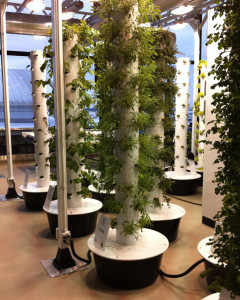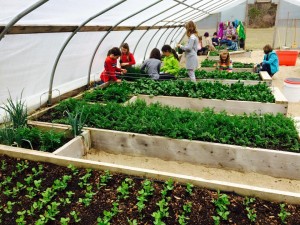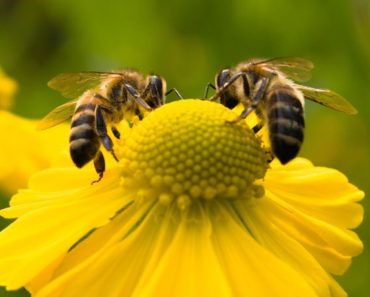What do Disney World and Chicago’s O’Hare airport have in common? Both grow food on-site for their customers. Using modern technology called aeroponics, these businesses have recognized that good fresh produce delivered without transportation is an economically sound decision. What they have really shown us is a way to feed the world.
Vertical Gardening
Aeroponic farming is a technique of growing certain fruits and vegetables using a plastic cylindrical tower dotted with numerous planting locations. An average tower contains 44 positions for something to be planted. Instead of using soil, the roots of the plant are bathed in a mist of water supplemented with natural nutrients. The result of this process is that food is produced quickly and efficiently using fewer resources than other growing techniques.‘The Greenhouse’ is a facility in Florida that grows produce for Disney World and local restaurants. Their greenhouse produces 135,000 plants each year, including crops of lettuce, tomatoes, broccoli, strawberries and squash along with herbs such as basil, mint and oregano. All of this takes place in one room that is 48 feet by 48 feet (14.6 meters square). Their tower gardening solution uses only FIVE PERCENT of the water normally required at an outdoor farm for this same output while using much less space.
The industry leader in vertical gardening solutions is a company called Future Growing LLC which was started up by inventor Tim Blank. After working in the Disney/Epcot Center food laboratories for twelve years, Blank began his own company as producer and supplier of complete aeroponic tower solutions. They now have over 4000 customers growing food using their system, proving that tower gardening is both viable and cost-effective.
Space Shuttle Experiments
In a cooperative effort between NASA and the Russian Federal Space Agency, food has been grown on a space station since 2002. Using an enhanced greenhouse, numerous experiments have been undertaken in a zero-gravity environment, refining our knowledge of food production. We have also proved that food can be produced in a completely artificial environment.An interesting and unexpected outcome of the space station experiments was the revelation that there are psychological benefits to growing food. Attendants on the space station growing food had higher levels of comfort and relaxation than comparative people on other space stations. The simple presence of living plant life changed the mood of the station.
A Garden in Every School
Now that we know indoor (or protected) vertical farming is feasible and economical, the next step is to introduce these concepts to the general public. Since eating is a life necessity, it would make sense that all children learn how to grow food. The education system could provide a venue for teaching this skill, with older students getting more advanced knowledge.
What if there were vertical gardens in every school? The output could be served to the children and staff while the skills developed by students would be very beneficial to their lives. Of course there are startup costs, but ultimately the program would pay for itself. There are already programs in the United States to provide free or subsidized breakfast and lunch to millions of children; would it not make sense to have the children growing their own food to reduce costs?
It has been proven that vertical gardening is highly productive, cost beneficial and possible in any environment. From that knowledge we have the ability to feed the world.
©Copyright 2015 Glenn Stewart Coles
Would you like to build your own vertical aeroponic gardening tower? This video tells you how.









